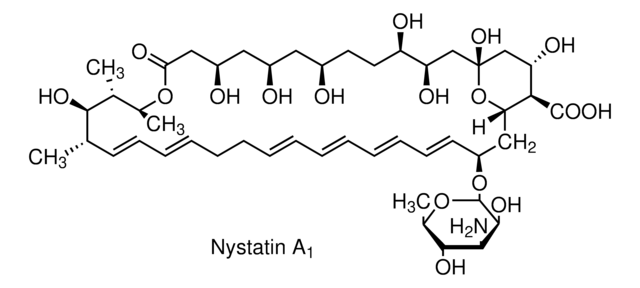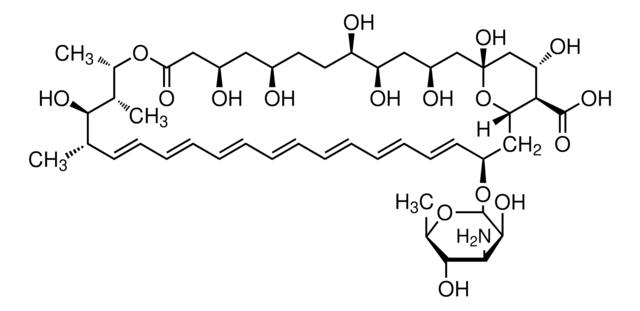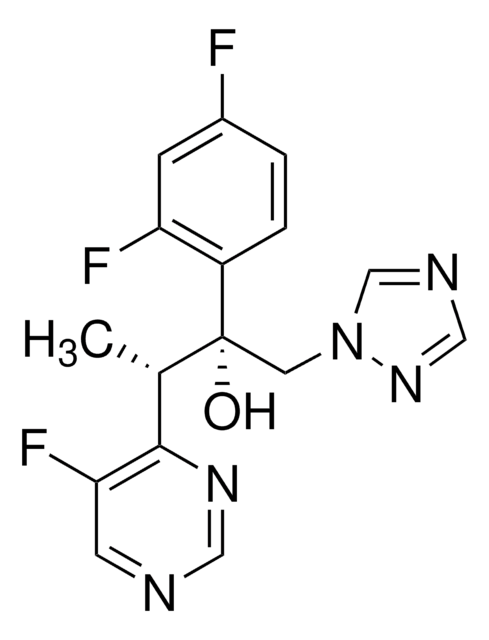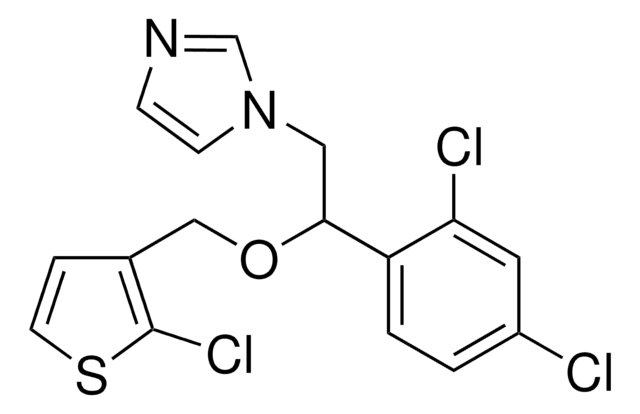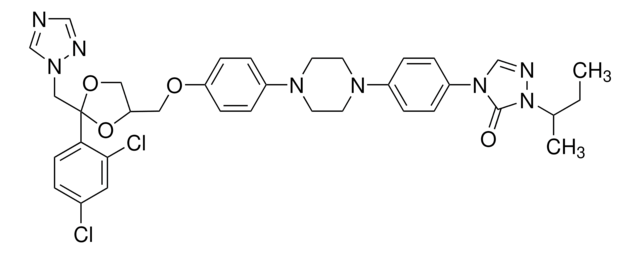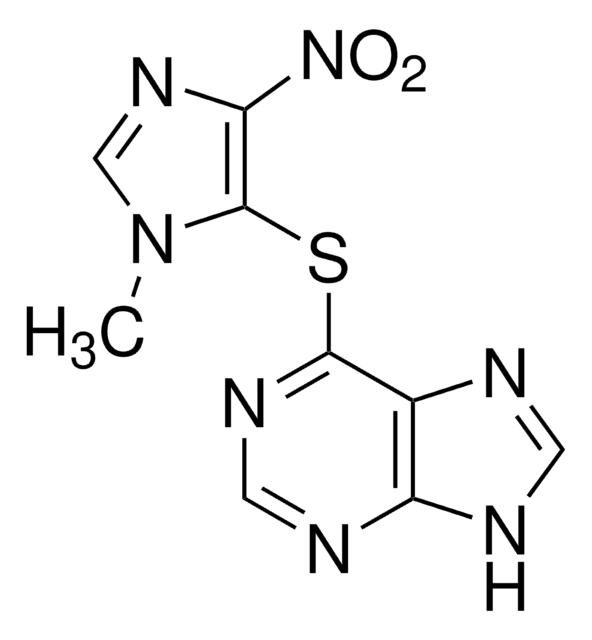SML2574
Candicidin
≥50% (HPLC)
Synonym(e):
Candicidin
Anmeldenzur Ansicht organisationsspezifischer und vertraglich vereinbarter Preise
Alle Fotos(1)
About This Item
Empirische Formel (Hill-System):
C59H84N2O18
CAS-Nummer:
Molekulargewicht:
1109.30
UNSPSC-Code:
51111800
NACRES:
NA.77
Empfohlene Produkte
Biologische Quelle
Streptomyces griseus
Form
solid
Lagerbedingungen
protect from light
Konzentration
≥50% (HPLC)
Löslichkeit
DMSO: 1 mg/mL
Lagertemp.
−20°C
Suchen Sie nach ähnlichen Produkten? Aufrufen Leitfaden zum Produktvergleich
Allgemeine Beschreibung
Candicidin is a polyene macrolide antifungal antibiotic which inhibits large number of fungi. 2 Polyene antifungal antibiotics, such as Candicidin, specifically target cell membranes containing sterols. Thus, selectively targets variety of prokaryotic organisms (such as Candida albicans) and not eukaryotic organisms. Candicidin generates cell membrane damage to Candida albicans (C.albicans) by triggering a rapid efflux of K+ ions. Interestingly, it was found that dosage needed for Candicidin to inhibit growth of stationary phase C. albicans cells is 25 μg/ml whereas log-phase C. albicans cells is only 5 μg/mL. In 1953 Kigman and Lewis performed the first in vivo study with mice to reveal the effects of Candicidin. Their study showed that Candicidin exhibits protective effect against C. albicans, Blastomyces dermatitidis and Sporotrichum schenkii but only a partial protective effect against torulosis and histoplasmosis. LD50 for Candicidin oral administration and intraperitoneal administration in mice were 90-400mg/kg and 2.1-7.0 mg/kg respectively. When comparing the activity of Candicidin to other antifungal compounds in vivo protects 100% of mice with C. albicans infection, whereas usage of twice the amount of Nystatin protects only 60% of the mice. Candicidin may undergo a photoisomerization process, yielding all-trans derivatives of Candicidin when exposed to direct UV light.
WGK
WGK 3
Flammpunkt (°F)
Not applicable
Flammpunkt (°C)
Not applicable
Analysenzertifikate (COA)
Suchen Sie nach Analysenzertifikate (COA), indem Sie die Lot-/Chargennummer des Produkts eingeben. Lot- und Chargennummern sind auf dem Produktetikett hinter den Wörtern ‘Lot’ oder ‘Batch’ (Lot oder Charge) zu finden.
Besitzen Sie dieses Produkt bereits?
In der Dokumentenbibliothek finden Sie die Dokumentation zu den Produkten, die Sie kürzlich erworben haben.
Unser Team von Wissenschaftlern verfügt über Erfahrung in allen Forschungsbereichen einschließlich Life Science, Materialwissenschaften, chemischer Synthese, Chromatographie, Analytik und vielen mehr..
Setzen Sie sich mit dem technischen Dienst in Verbindung.